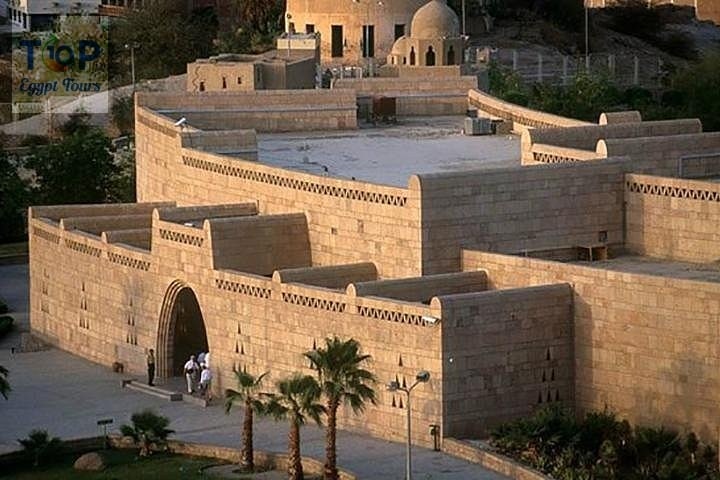Nubian Museum In Aswan, Welcome to the heart of Nubia, where ancient history and vibrant culture come together at the Nubian Museum. In this article, we delve into the captivating journey of the Nubian people and the invaluable efforts of the Nubian Museum in preserving their rich cultural heritage. Situated in Aswan, Egypt, this museum is a treasure trove of Nubian history, traditions, and artifacts, offering visitors a unique window into the past.
Unveiling Nubia’s Past:
1. Nubia: A Timeless Legacy
Nubia, an ancient region along the Nile River, boasts a history that predates even the pharaohs of Egypt. Explore the roots of Nubian civilization, from the Kingdom of Kush to the Nubian kingdoms of Kerma and Meroe. Learn about their contributions to art, architecture, and trade that shaped the cultural landscape of the region.
2. The Nubian Kingdoms
Dive into the fascinating history of the Nubian kingdoms, known for their impressive pyramids, sophisticated irrigation systems, and strategic trade routes. Discover the tales of mighty Nubian rulers and their interactions with neighboring civilizations, creating a mosaic of cultural exchange.
The Nubian Museum: A Cultural Oasis:
Nubian Museum: Preserving the Rich Cultural Heritage
Nestled on the tranquil banks of the Nile River in Aswan, Egypt, stands a testament to a civilization as ancient as the sands themselves – the Nubian Museum. Location and space:
The Nubia Museum was established in 1997. The museum is located in one of the most beautiful archaeological areas in Aswan. It occupies a high hill next to the Nilometer.
The Nubia Museum is located on an area of fifty thousand square metres, and the museum building is built on seven thousand square metres, and forty-three thousand square meters for the external site and open display. Half of the area on which the museum building is located has been allocated to the internal museum exhibition halls, and the other half to stores, restoration, and research management. , administration places, and public services.
The architectural design of the museum is characterized by the Nubian architectural style, which the designers were inspired by the Pharaonic tombs. The building won the award for the most beautiful architectural building in the world in 2001.
Interior components of the museum:
The basement: It contains the main exhibition hall, restoration laboratories, workshops, antiquities stores, a reception center, and the open-air theatre.
Ground floor: It has the main entrance, an exhibition hall, a lecture hall, a hall for VIPs, security and administration rooms, and a room for the general director of museums.
The first floor: It includes the cafeteria, the library, the museum, photography and microfilm rooms, and the museum administration and services.
A Legacy Unearthed:
The museum’s construction was a direct response to the international campaign to save the Nubian monuments from the rising waters of Lake Nasser, a result of the Aswan High Dam project. As ancient temples and settlements faced submersion, a monumental effort was undertaken to relocate them to higher ground. The Nubian Museum became the repository for the salvaged treasures, offering them a safe haven and ensuring their preservation for future generations.
A Journey Through Time:
Stepping into the museum’s airy halls is like embarking on a journey through time. The exhibits are thoughtfully curated, showcasing the evolution of Nubian civilization from the Predynastic Period (5500-3100 BC) to the Christian era (4th-6th centuries AD). Visitors are greeted by colossal statues of Ramses II and his beloved queen Nefertari, their imposing figures echoing the grandeur of their reign.
Treasures Beyond Compare:
The museum’s collection boasts an array of treasures that will captivate any visitor. Exquisite jewelry adorned with precious stones, intricately painted pottery, and everyday objects used by Nubians in their daily lives offer a glimpse into their vibrant culture and sophisticated craftsmanship.
More Than Just Artifacts:
The Nubian Museum goes beyond simply displaying artifacts. It actively engages visitors through interactive exhibits and multimedia presentations, bringing history to life. Visitors can learn about Nubian myths and legends, explore their unique artistic expressions, and even try their hand at traditional crafts.
A Beacon of Cultural Preservation:
The Nubian Museum plays a vital role in safeguarding and disseminating Nubian culture. It hosts educational programs and workshops for students and the community, ensuring that the legacy of this ancient civilization continues to inspire and educate generations to come.
As you embark on a journey through the Nubian Museum, you not only witness the remarkable history of Nubia but also contribute to the ongoing efforts to preserve its rich cultural heritage. The museum stands as a testament to the resilience and continuity of the Nubian people, inviting visitors to become a part of this captivating narrative. Come, be enchanted by the Nubian Museum and the timeless legacy it holds within its walls.
Plan your trip to Egypt today and experience the magic of the Nubian Museum with Top Ten Egypt Tours!
Browse our complete list of Egypt tours Click Here



Comment (0)